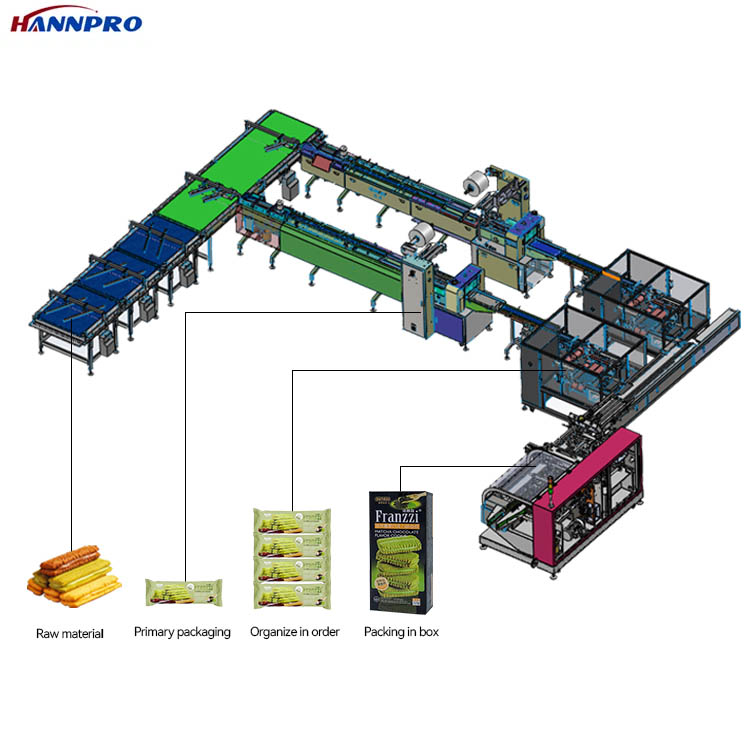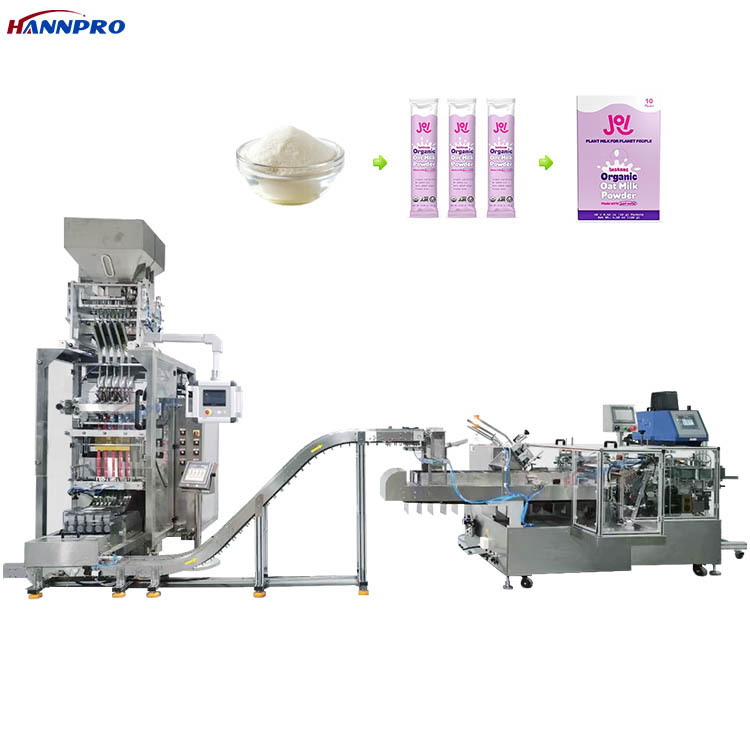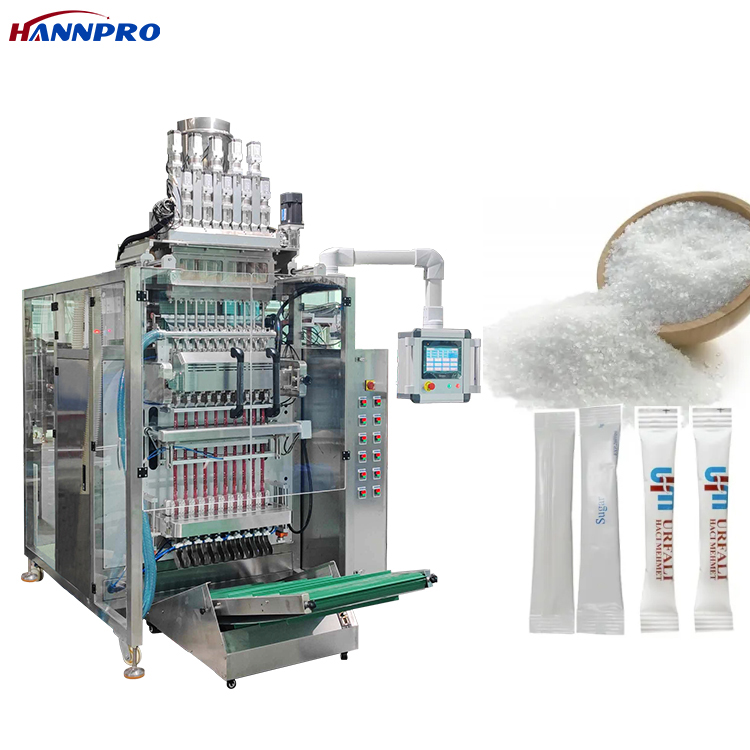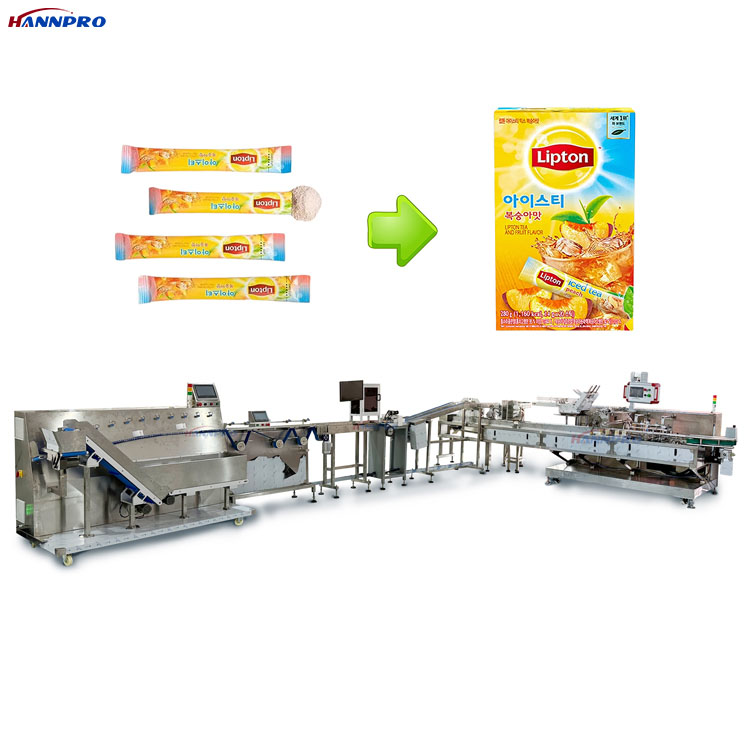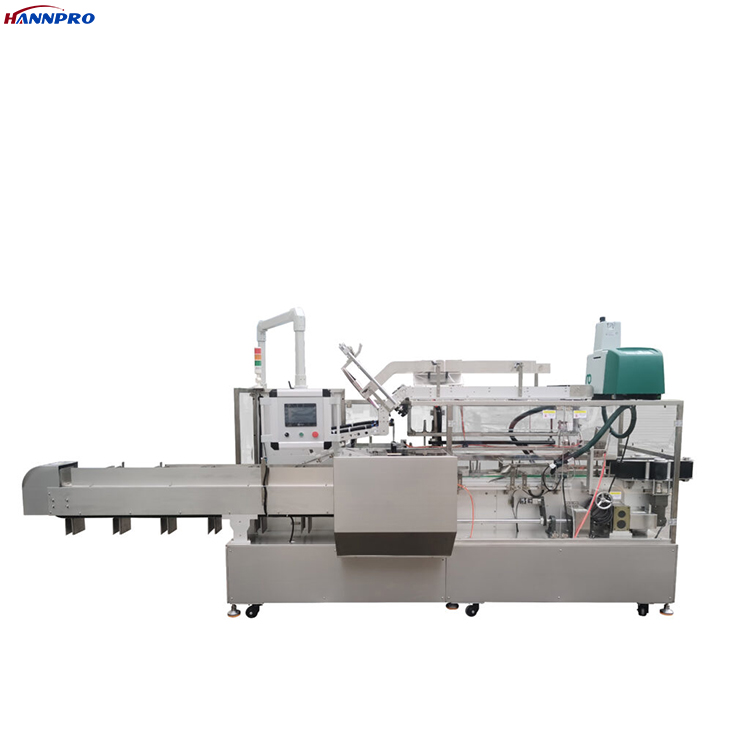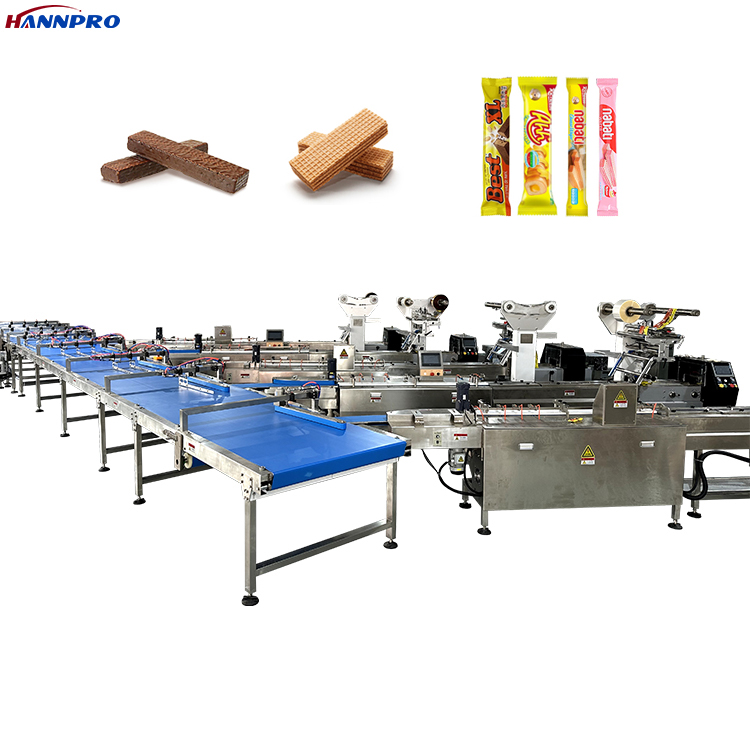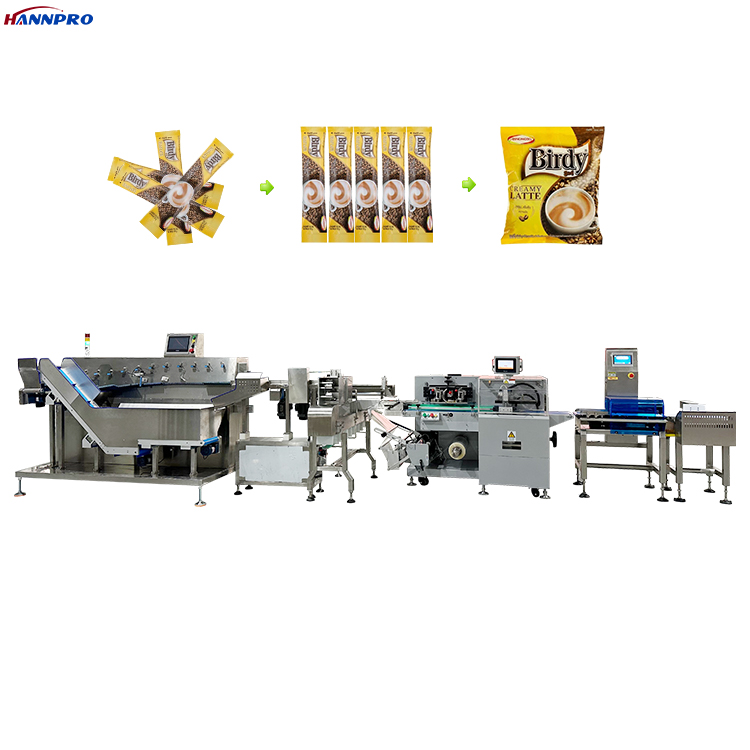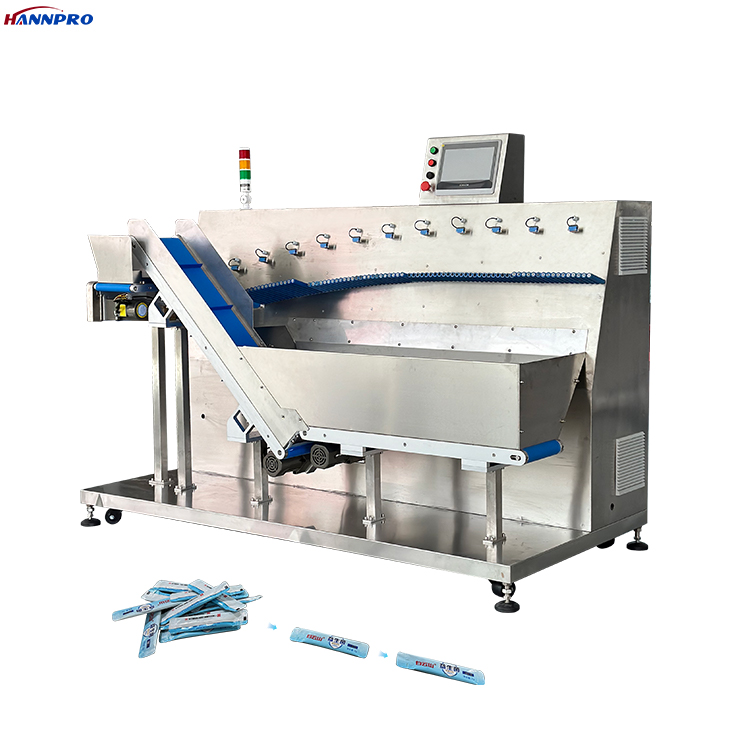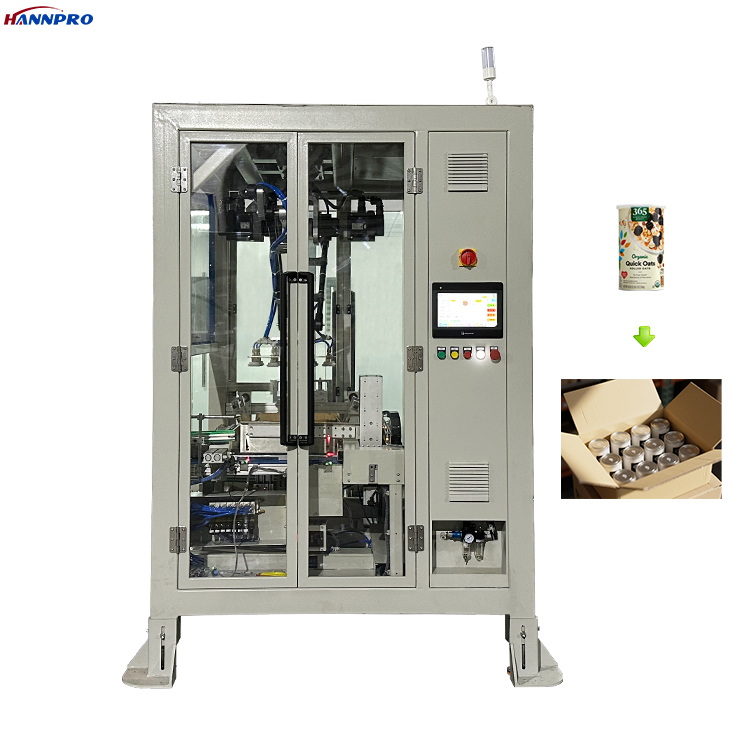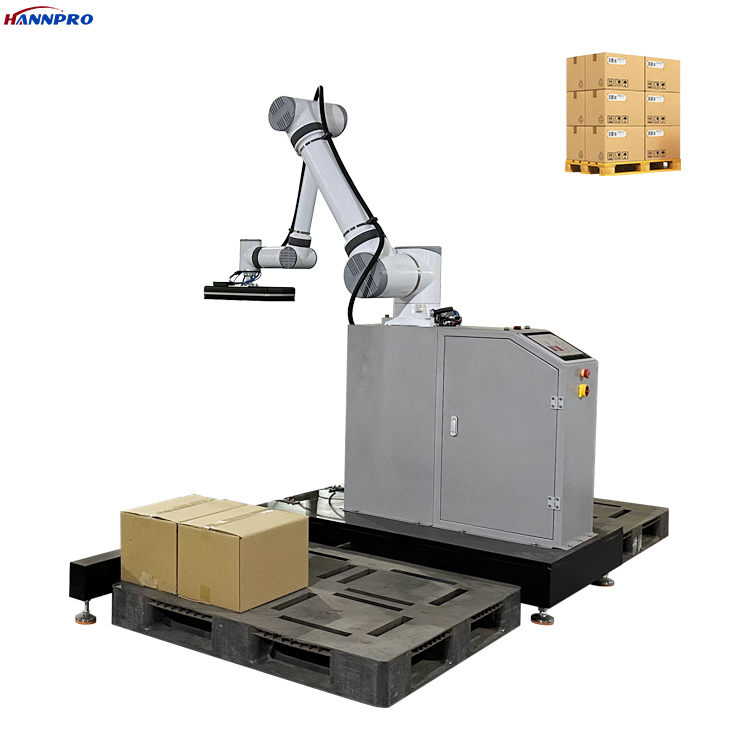stick pack sorting machine is an automated industrial system designed to handle, organize, and sort small, narrow pouches known as stick packs—typically used for single-serve portions of products like drink powders, condiments, pharmaceuticals, or personal care items.
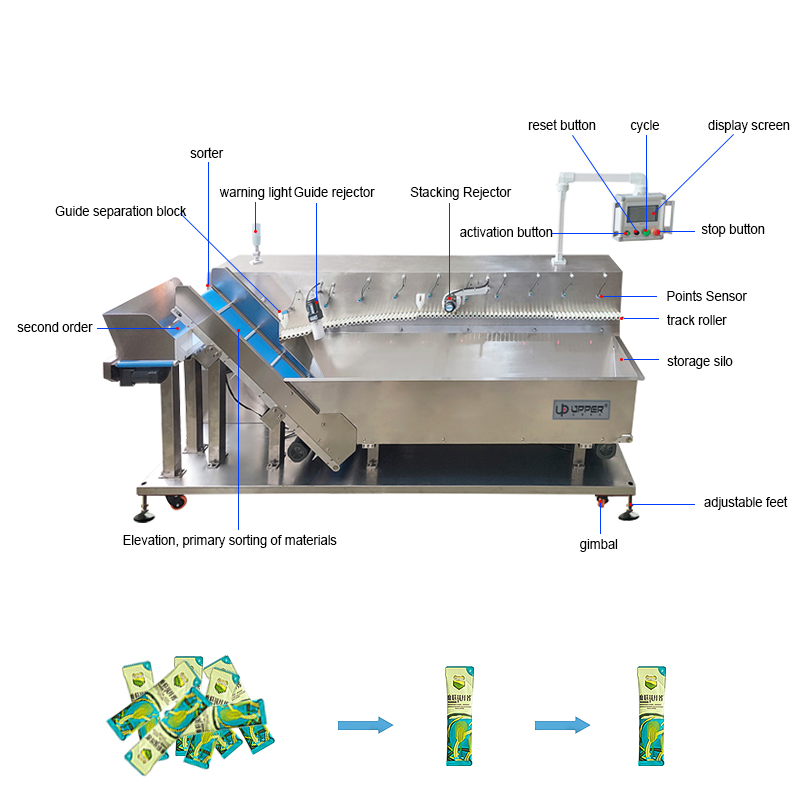
A stick pack is a small, tube-shaped pouch, usually 5–20 cm long and sealed at both ends. It's commonly used for:
Drink mixes (e.g., coffee, juice, energy drinks)
Seasonings and sauces (e.g., soy sauce, ketchup)
Nutraceuticals and pharmaceuticals (e.g., probiotics, supplements)
Detergents or liquid soap samples
Key Functions of a Stick Pack Sorting Machine
Feeding (Unscrambling & Orientation)
Takes randomly dumped or piled stick packs from a hopper.
Aligns them uniformly using vibratory feeders, conveyor systems, or rotating discs.
Inspection & Detection
Check for missing or damaged packs
Verify printing, sealing quality, or batch codes
Detect double-stacked or misaligned packs
Uses vision systems (cameras) or sensors to:
Sorting & Distribution
Product type
Flavor or variant
Customer order
Packaging stage (e.g., into multi-packs or cartons)
Directs stick packs into correct lanes or containers based on:
Integration with Downstream Equipment
Multi-pack wrappers (e.g., grouping 5 sticks together)
Cartoning machines
Labeling or case-packing systems
Feeds sorted stick packs into:
Common Technologies Used
Vibratory bowl feeders – Gently move and align stick packs.
Linear conveyors with guides – Transport packs in single file.
Robotic pick-and-place (with vision guidance) – For flexible, high-speed sorting.
Pneumatic or mechanical diverters – Route packs to different output channels.
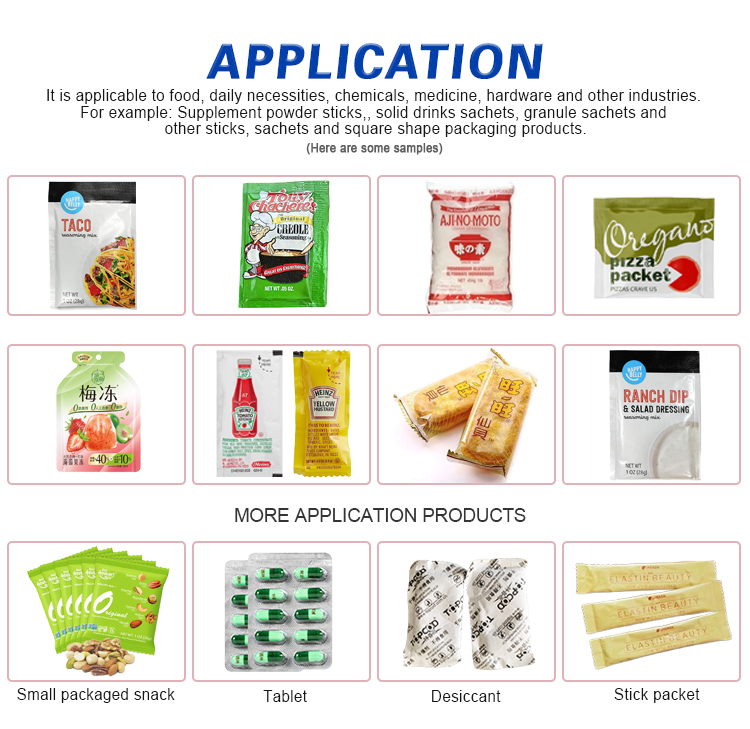
Benefits
High Speed: Can process hundreds of stick packs per minute.
Consistency: Reduces human error in sorting.
Hygiene: Minimizes manual handling, important for food and pharma.
Scalability: Easily integrated into fully automated production lines.
Summary
A stick pack sorting machine automates the process of organizing and routing small stick-shaped pouches from a disordered state into a structured, efficient workflow. It ensures that the right product goes to the right packaging or shipment, improving throughput, quality control, and operational efficiency in modern manufacturing.


